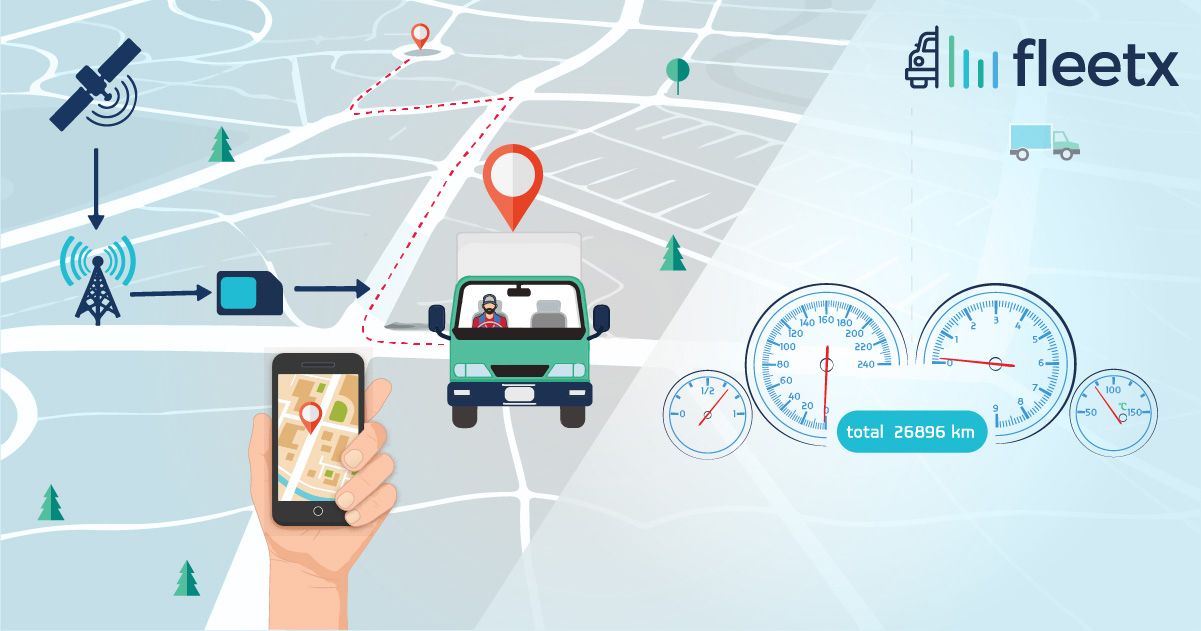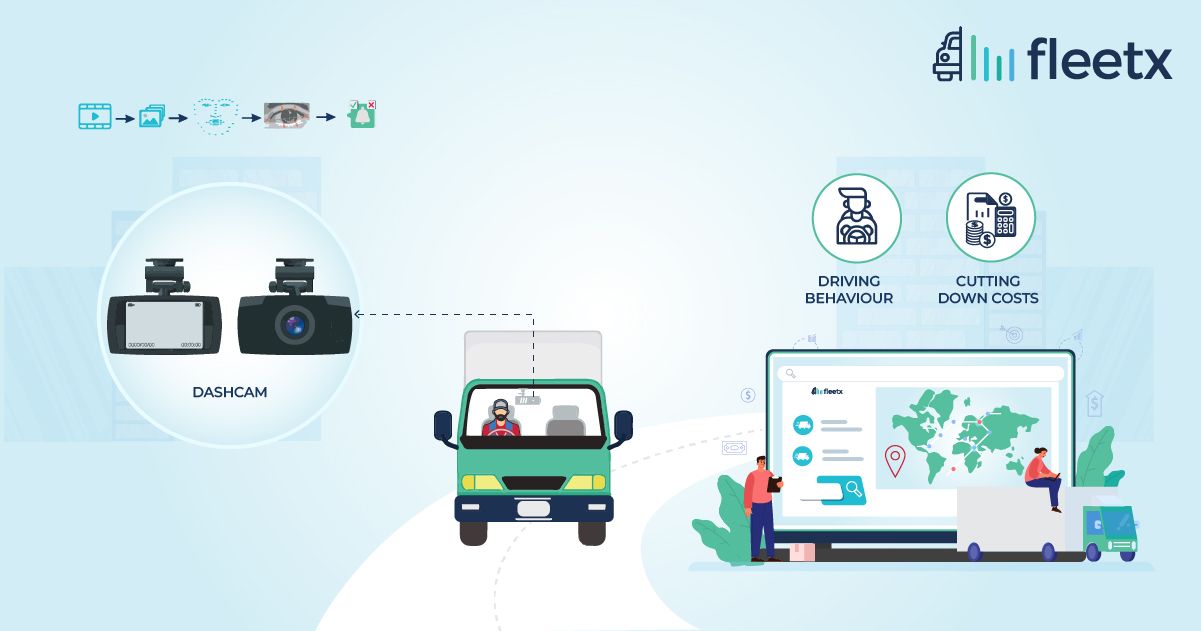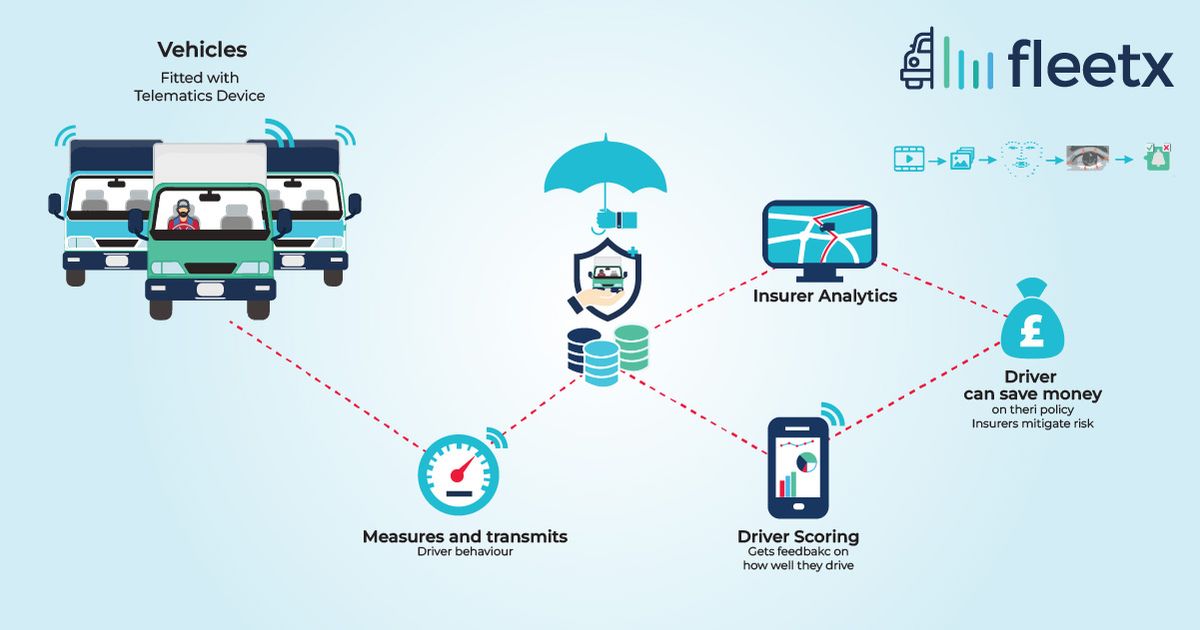
The odometer data has been problematic because of the variance between the data from different sources. The distinction can be seen in how data is gathered and evaluated. The most common method for determining how far a vehicle has traveled is to utilize its odometer. When you manage a business, every penny matters and adds up to total expenses and choosing an accurate way for measuring this data can save a whole lot. Here we'll briefly discuss the usage of GPS vs. an odometer in this article and know which can help you cut costs for your business.
How does an Odometer work and what leads to inaccuracies?
The term "odometer" refers to a device that counts wheel rotations and multiplies them by the tyre circumference to determine the distance a vehicle has driven. The diameter of the tyre is multiplied by pi, or 3.1416, to determine its circumference. This relatively straightforward method has been in use for many years. Regardless of whether they are mechanical, digital, or electromechanical, they all function by keeping track of how often the wheels are rotated.
There is a disparity when comparing vehicle odometer readings with the distance determined by internet map services, but no odometer is 100 percent accurate. The only thing that vehicle odometers actually measure are the rotations of the final driveshaft, and just like GPS, they use the distance traveled over time to determine speed once you know how far the vehicle travels for each driveshaft rotation.
The main causes of the vehicle odometer's inaccuracies are modifications to tyre size, worn out tyres, wrong size tyres, mechanical component degradation, tampering, and legally required inaccuracies. Since the odometer records the number of wheel rotations, it stands to reason that the readings could be significantly affected by the state of the tyres.
The distance traveled by a vehicle on an old tire is less than it would be on a new one for each revolution, therefore the odometer will read that the vehicle is traveling quicker than it actually is. The worst thing an odometer can do right now is to mislead you into believing you are moving more slowly than you actually are. This allows for variations in tyre size and the way that the outdated analogue odometers are made. International legislation states that the tread depth of new tyres can range from 6 to 10 mm, with the minimum permissible tread depth for summer tyres being 1.6 mm and the minimum legal tread depth for winter tyres being 3 to 4 mm.
It implies that a reduction in tread depth will also result in a reduction in wheel radius. According to calculations, a 5 mm variation in the wheel radius results in a 2 % difference in the mileage displayed on the odometer.
Does the odometer type influence the mileage data?
All the in-vehicle odometers have a maximum chance of errors. According to legislation reports, the average speedometer error is only permitted to be positive and cannot exceed the real speed by more than 10% + 6 km/h. These data are calculated so that the readings are 5–10% higher than the actual number and the key motivation for doing this is to control worldwide traffic, accident reduction and road safety.
The type of odometer that is installed also affects the error gap. By default, the mechanical odometer can be up to 5% off. The total inaccuracy may even be 12–15% depending on the vehicle's operating circumstances, the wear on parts and assemblies, and the usage of non-OEM components.
On the other hand the electromechanical odometer calculates data based on the speed sensor's electronic pulse counter readings. It denotes a relationship between the instrument measurements and the number of pulses per time unit which leads to smaller inaccuracies of 5-7% making electromechanical ones more accurate.
How is GPS data more accurate?
The precise determination of position, time, speed, and distance is made possible by the Global Positioning System (GPS), a satellite-based technology. Using information from at least four satellites orbiting the Earth, this sophisticated technology can determine your location to within a 5-meter radius. The atomic clocks onboard GPS satellites allow for perfect timekeeping. The receiver uses the time information that is included in the broadcasts that the satellite continuously sends to determine when the signal was sent. The tracker uses its distance from them to calculate its precise location, speed, and miles using the signals from the Global Navigation Satellite System.
Your vehicle GPS system simply listens to the GPS satellites in the sky above you. Your GPS calculates the approximate distance between each satellite and by comparing the time it receives from each satellite. Your GPS can determine where you must be within , say n meters by knowing where the satellites are and performing some complex math. GPS speed calculation is pretty accurate. GPS fleet tracking system data simply is derived through mathematical computations of the location of the vehicle in relation to the navigation satellites, odometer data is obtained through various electro-mechanical converters and depends on wheel speed.
In summary, GPS easily beats odometer accuracy in comparison since tyre condition and other comparable elements have no bearing on the accuracy of the captured data.
Benefits of using GPS
Transparency and accountability are enhanced.: You can use GPS to accurately determine how many miles each vehicle has driven. It operates offline, has the ability to track speed, and you can literally repeat routes. Another fantastic function for drawing a boundary geographically is geofencing. In contrast to the outmoded odometer approach, GPS completely automates the procedure and provides you full control over your spending.
Keep expenses simplified: GPS will give you access to reliable, real-time mileage readings, reducing the possibility of manipulating your travel expenses. It's not even necessary to install expensive, large hardware. All your drivers need to do to get started is download the app to their smartphones and log into their accounts.
Conclusion
For all companies that depend on odometer readings , finding a solution to the GPS vs. odometer accuracy issue could be a game-changer. When employing the manual approach with odometer readings, making sure that the mileage is appropriately recorded and keeping reimbursement expenses in check can be quite a challenge.
A GPS-powered mileage monitoring system will simplify the procedure and give you peace of mind about driver accountability and cost tracking.
How to track vehicles with gps?
Put a GPS tracking device in equipment or vehicle you want to track. The satellite sends signals to the receiver, who then receives them. In real time, the receiver determines the separation between itself and the satellites. Your vehicle's movement or journey distance, coordinates, and speed are recorded in a report.
Can you track a vehicle with GPS?
Yes, you can track a vehicle with GPS. The satellite sends signals to the receiver, who then receives them. In real time, the receiver determines the separation between itself and the satellites. Your vehicle's movement or journey distance, coordinates, and speed are recorded in a report.






